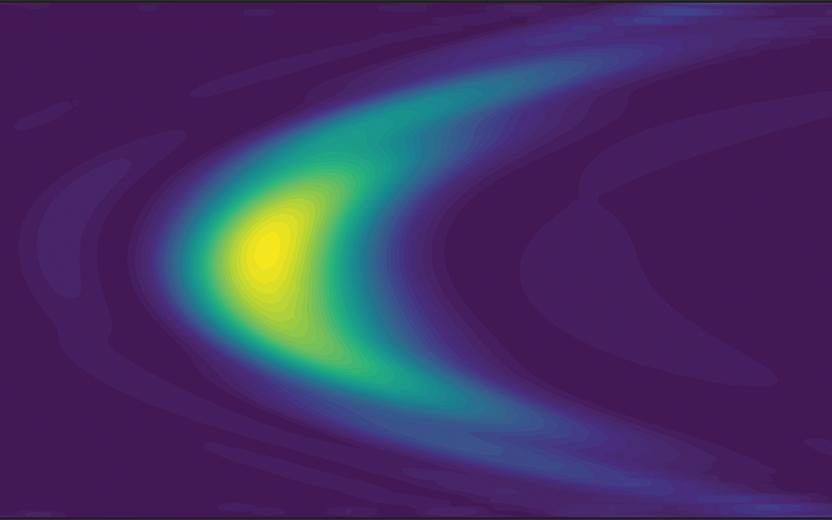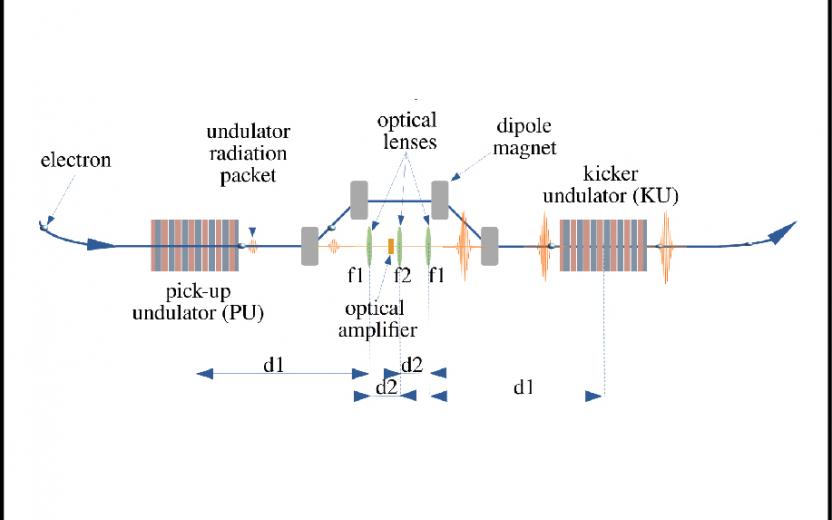A Single-pass Cr:ZnSe Amplifier for Broadband Infared Undulator Radiation
Advanced beam cooling techniques are being developed to address the challenge of luminosity degradation that occurs during a beam store in high brightness hadron and heavy-ion colliders. One such technique is Optical Stochastic Cooling (OSC) which aims to leverage the large bandwidth that optical amplifiers can support in order to make extraordinarily precise corrections to the particle beam distribution. A proof-of-principle demonstration will soon happen in the Integrable Optics Test Accelerator (IOTA) at Fermilab. An advanced stage of the experimental program is a test of a mid-IR optical amplifier based on a highly doped Cr:ZnSe crystal. In this paper we develop formulae to compute the expected gain from the amplifier and also present wave-optics simulations to compute the interaction between an amplified radiation wave-packet from the pickup undulator inside the kicker undulator. The amplifier’s bandwidth and host dispersion are realistically accounted.
Reference:
M. B. Andorf, V. A. Lebedev, and P. Piot, “Single-pass Cr:ZnSe amplifier for broadband infrared undulator radiation,” Optics Express, vol. 28, no. 18, p. 26601, Aug. 2020, doi: 10.1364/OE.396431. Available [Online] http://arxiv.org/abs/2004.13223


